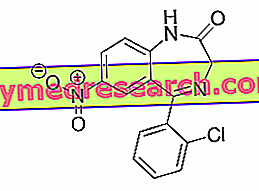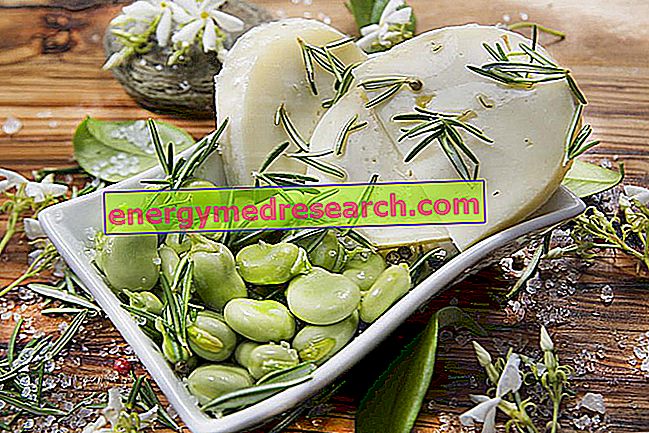Premise
Not surprisingly, saponaria has this name: we are talking about a plant that, just like soap in water, fills thanks to its detergent properties made from the abundant saponin content.
In the past, soapstone was widely used for its physical-mechanical properties (excellent product for washing fabrics - wool in particular) and therapies (expectorant, purifying, diuretic, mucosal irritant - correlated to expectorant capacity - remedy for skin diseases) ;

Botanical analysis
The plant commonly known as saponaria or red saponaria, in botany is Saponaria officinalis, an exponent of the Caryophyllaceae family. The genus Saponaria includes about 30 species of biennial or perennial plants, typical of European lands up to Siberia: the herbaceous plant generally grows in moist soils, near hedges and paths, and is widely used to decorate rock gardens.
The saponaria stems show many branches; generally, the stems, cylindrical and large, do not exceed one meter in height. The basal leaves are petiolate, unlike the caulinars, sessile: they are lanceolate, opposite and have a yellowish color, sometimes tending to green. The graceful and elegant saponaria flowers, consisting of five lilac petals or rosy bench, are always gathered in terminal panicles: similar to carnations, they bloom in clusters during spring, and are very numerous, almost hiding the leaves.
The fruits of saponaria are capsules that contain many brownish seeds.
Although they prefer loose and well-drained soils, saponaria plants develop easily in any type of soil; however, excessive moisture from the earth may be responsible for the death of the plant.
Active ingredients of soapstone
In herbal medicine, saponaria root is used, rich in saponins, flavonoids and vitamin C.
The saponary marker is quillaic acid, saponin which characterizes the phytocomplex. The quillaic acid content varies from 2.5 to 5%, depending on the time of harvest: the quantity of this saponin is maximum in the months prior to flowering (April and May), and minimum in summer months (July and August), corresponding to the period of full bloom.
Among the compounds of the flavonoid nature, we cannot miss the vitexin and saponaretin, saponarins mainly contained in the leaves of saponaria.
Other chemical constituents include: glyceric acid, glycolic acid, galactans, gums and essential oil (0.185%).
Property
As the name implies, the therapeutic virtues of soapstone are mainly due to the presence of saponins.
First of all, saponaria is known for its expectorant virtues: taken orally in the form of a decoction, saponaria favors an increase in bronchial secretion, which becomes more abundant and fluid. Furthermore, saponins cause irritation of the mucous membrane, which is useful to promote the elimination of sputum.
The saponins contained in the soapstone stimulate diuresis: eliminated via the kidney, in fact, exert a local stimulus facilitating the excretion of urine. Clearly, the diuretic activity is associated with the depurative and diaphoretic activity.
Do not forget that saponins are able to enhance the pharmacological activity of some substances: a typical example is the synergism between saponins and digitalis derivatives (eg Digitalis purpurea ).
For topical use, the products formulated with saponary extracts are used as skin cleaners.
Recently, the hypocholesterolemizing activity of saponaria has been demonstrated in laboratory guinea pigs: saponin-derived compounds, in fact, seem to influence the intestinal absorption of cholesterol. [from E. Campanini's Dictionary of herbal medicine and medicinal plants ]
Taken orally, saponins from saponaria are useful against fever, liver and gastrointestinal disorders.
Cosmetic use
Known for centuries is the foaming use of soap in natural cosmetics: after filtering, the saponary decoction can be used as a valid alternative to the classic shampoo, particularly suitable for brittle hair, which tends to break. Saponaria is also used for cleansing delicate skin, also recommended for purifying skin affected by psoriasis or acne.
Also useful for washing fabrics, soapstone is used in the production of detergents and laundry soaps.
Saponaria and toxicity
Taken orally at high doses, soapstone saponins are toxic: it is no coincidence that the administration of saponary extracts must be carefully dosed.
Injected, the active ingredients of saponaria can generate convulsions, inflammation of the kidneys, haemolysis and blood diarrhea; the symptoms of excessive intake of saponins can degenerate to the point of weakening or paralyzing the muscles, generating a cardio-circulatory depression and, in the most serious cases, inducing death.
For topical use, saponary extract can cause skin or mucosal irritation.
Summary
SAPONARIA: to fix the concepts ...
| Saponaria: name | It bears this name because, just like soap in water, it forms a consistent foam → detergent properties |
| Saponaria: in the past | Used for physical-mechanical (washing) and therapeutic (expectorant, purifying, diuretic, remedy for skin diseases) |
| Saponaria: current employment | Its use has now gone out of use |
| Saponaria: botanical analysis |
|
| Saponaria: drugs | Saponaria root and leaves |
| Saponaria: chemical constituents |
|
| Saponaria: property |
|
| Saponaria: interaction | Digitalis derivatives |
| Saponaria: cosmetic use | Saponaria decoction: alternative to shampoo, for brittle hair Topical application of soap-based products: cleansing of skin affected by psoriasis / acne Useful for washing fabrics and wool |
| Saponaria and toxicity |
|



